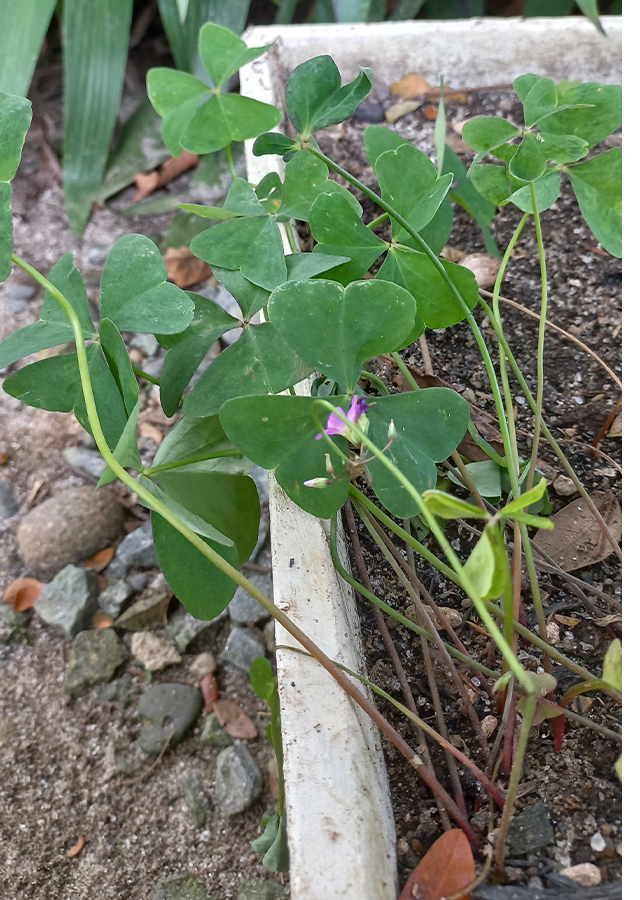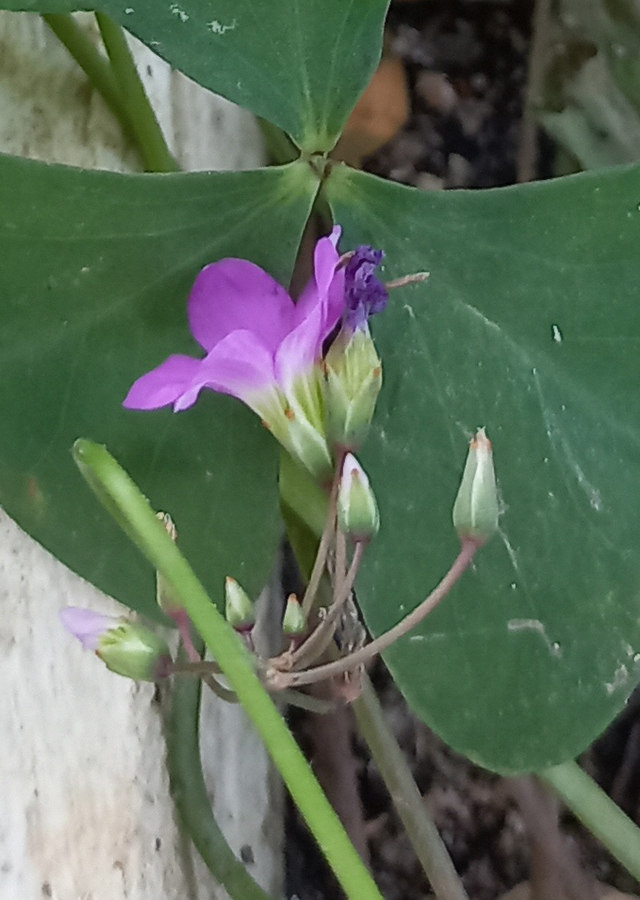Traditional Herbs from Oxalis latifolia
corneal_cloudiness
- Take a sufficient amount of fresh small calincing butterfly leaves and wash them until clean.
- Soak the leaves in water and leave for a while.
- Use the soaking water to wash your eyes.
warts": ["Prepare enough small leaves of fresh calincing butterfly leaves then wash them until clean.
What is Oxalis latifolia Looks like??



Parts of Oxalis latifolia that could be used
- Leaves
- All Parts of the Plant
Oxalis latifolia Distribution
Oxalis latifolia is native to Mexico, parts of Central America and South America but has been introduced very widely in Africa, Asia and Australasia. This species is registered as a weed in at least 37 countries and is a major weed in India, New Zealand, Australia, South Africa and Uganda. This plant is harvested from the wild for local use as food. Where the leaves and stems can be consumed as vegetables or made into tea in Mexico. However, it is not recommended to consume large amounts of leaves, because the leaves contain oxalic acid which can bind the body's calcium supply causing nutritional deficiencies. The amount of oxalic acid will decrease through the heating (cooking) process. Oxalis latifolia is also often planted by people as a ground cover plant and ornamental plant (especially in tropical areas). This species is also famous in India and is one of the versatile medicinal plants having a wide spectrum of biological activities. Based on the study results, it is known that Oxalis latifolia leaves can be used as a medicinal supplement in the pharmaceutical industry for the treatment of various diseases. This species is also an easily accessible source of natural antioxidants.Agroecology of Oxalis latifolia
Oxalis latifolia is a humid tropical plant, which can be found mainly in areas at higher altitudes between 1,100 - 1,800 m above sea level (up to 3,000 m above sea level in Colombia), and also from subtropical areas. This species is most often found in gardens, fields, plantations (especially coffee, tea, cassava, corn, rice, potatoes, cereals, sugar cane, fruit and vegetable gardens), and settlements, and grows best in shady and damp conditions.
Morphology of Oxalis latifolia
- The taproot is fleshy, resembling a small carrot but whitish in color. It has a tuber located at the top of the taproot, oval in shape (1 to 2 cm in diameter) with stolons more or less erect and numerous, many brown scales, elliptical, the outside is brown and thin, white inside, fleshy.
- Stems not formed.
- Leaves appear on long petioles from the ground surface, glabrous, trifoliate, with individual leaflets heart-shaped, triangular or resembling butterfly or fishtail broad, green. Apex emarginate with broad shallow sinuses. "Flowers numerous on a stalk bearing umbels of 5-12 flowers each at the tip. Five petals are purple-pink, the inside (base of the flower) is yellowish green with green stripes. Has two sets of five stamens of different lengths Explosive capsule, green, wide cylindrical, slightly longer than the sepals, glabrous, carpel with 4-8 seeds but rarely bears fruit.
- Ellipsoidal flat seeds, orange to dark yellow, about 1 mm long and ribbed." ]
Cultivation of Oxalis latifolia
- Vegetative propagation by tubers and generatively by seeds. However, seeds are rarely produced.
- Three main phases in the growth of Oxalis latifolia using tubers: The formation phase (weeks 1-5) is characterized by a slow increase in dry weight in absolute terms, but high relative growth rate. Reproductive phase (weeks 6-12), in which stolons grow from the parent bulb and initiate bulbils at the apex, several primary bulbils support secondary bulbils Senescence phase (week 13 etc).
Oxalis latifolia, more details :
Chemical Content of Oxalis latifolia
Tannins, alkaloids, phenols, saponins, flavonoids and oxalic acid.
Benefits of Oxalis latifolia
Treats ulcers, heals wounds, dysentery and diarrhea, Quarten fever, skin diseases, removes warts and corneal clouding, treats vomiting in children. Has activity as antibacterial, antifungal, anti-inflammatory and antiscorbut.
Simplisia of Oxalis latifolia
- Prepare butterfly leaf calincing leaves, wash thoroughly with running water then drain.
- Dry in the sun or in an oven temperature\u00a040\u00b0C until the water content\u00a010%.
- Choose using a blender until it becomes powder.
- Store in a clean and airtight place.
Another Facts for Oxalis latifolia :
Synonym of Oxalis latifolia
Acetosella violacea subsp. latifolia (Kunth) Kuntze, Ionoxalis latifolia (Kunth) Rose, Sassia latifoloa (Kunth) Holub
Habitus of Oxalis latifolia
Herb. Annual herb, up to 30 cm high
Habitat of Oxalis latifolia
- Mainland
No comments:
Post a Comment